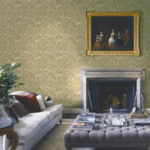With all the arrival of Europeans in Latin America, old-fashioned cultures that are native with those of African, in addition to European, individuals and an amount of native social elements had been damaged. In Mexico, as an example, the Inquisition forbade “pagan” exhibitions, evoking the demise of native puppetry. Nevertheless, some populations that are native in a position to protect their traditions by hiding from colonizers.
Through the time of colonization, puppets contributed to your propagation associated with Catholic doctrine. Franciscans along with other religious purchases utilized puppetry within their depictions of pastorals and secrets (autosacramentales) which were, in reality, well received because of the populations that are indigenous. This custom then distribute from nation to nation in your community.
Nonetheless, the Catholic Church had been not able to entirely expel puppet that is popular which contains mostly burlesque-style short performs with accompanying guitar music, done in taverns, courtyards or general public squares. All the puppeteers constructed their puppets that are own cause them to look Spanish, copying their faculties and costumes, and mimicking their behaviour. These travelling entertainers went from village to town with regards to portable puppet stage. Their satirical and critical tone, targeted at the Spanish colonizers, mirrored a social discontent and had been taken on in nations like Mexico and Chile, perpetuating this rebellious tradition with time. Several hundreds of years later on in 1940 Mexico, the creation of the smoothness Don Ferruco http://hookupdate.net/nl/vgl-overzicht/ by Gilberto RamГrez Alvarado (1910-1990) served as anti-fascist propaganda. In Argentina, Chile and Uruguay, through the seventeenth century and throughout the entire eighteenth century, these puppeteers and entertainers travelled throughout these nations along with their trestles, nevertheless the distrustful authorities would refuse them use of theatres. For the period that is long of, doing in a theater ended up being reserved for international musicians, initially from Spain and Italy. One of several initial puppeteers who obtained permission to execute in Argentina, Chile, Uruguay and Brazil through the last half associated with eighteenth century ended up being the Spaniard JoaquГn Olaez y GacitГєa (see Itinerant Troupes, Travelling Puppeteers). Meanwhile, the initial theatres automata that is showing some prompted by the Spanish mГЎquinas reales, sprang up starting through the eighteenth century in nations like Argentina, Mexico and Cuba.
Nationwide Genres and Characters
Through the nineteenth and for the century that is 20th remarkably popular nationwide figures showed up. In Mexico, Don FolГas (1828) had been a puppet whoever throat and nose would elongate because it became angrier. In Uruguay, Misericordia Campana (1840) became a type or sort of nationwide hero, seen as an the capoeira or mind butts it might provide during arguments. In Chile, Cristobito and MamГЎ Laucha had been popular, even while they shed their Spanish origins and assumed Chilean characteristics. These puppet that is emblematic characters also included JoГЈo Minhoca (1882, Brazil) a little, really clever black man, whom arrived within a diversification for the culture of the time. In 1914, Sergio LondoГ±o Orozco (1880-1944), certainly one of Colombia’s most representative and most commonly known puppeteers, developed Manuelucho SepГєlveda. Cuba’s Pelusin del Monte was made in 1956 by Dora Alonso (1910-2001), a novelist and figure that is prominent children’s literary works.
A genre still alive today, even though in danger of disappearance among the important popular puppet traditions, Brazil stands out from all other Latin American countries by its mamulengo. According to improvisation having an exchange that is constant puppeteers additionally the public, it really is described as an essential part of music along with social critique with its discussion. Other ancient traditions that are popular additionally survived in Latin America, in specific the processions of “big minds” and giant puppets, originating from colonial spiritual ceremonies, like Corpus Christi. These could be present in Brazil as well as San Miguel de Allende in Mexico.
Puppet Dissemination
At the start of the 20th century, the see of this famous Italian marionette (sequence puppet) troupe Teatro dei Piccoli of Vittorio Podrecca to many Latin US nations created a fantastic stir. Subsequently a few of the pupari (Sicilian pupi showmen) settled in Argentina into the Buenos Aires neighbourhood of Los Angeles Boca. In Mexico, the marionette puppet company Rosete Aranda ended up being active during the majority of one complete century from 1835 to 1942.
























































































